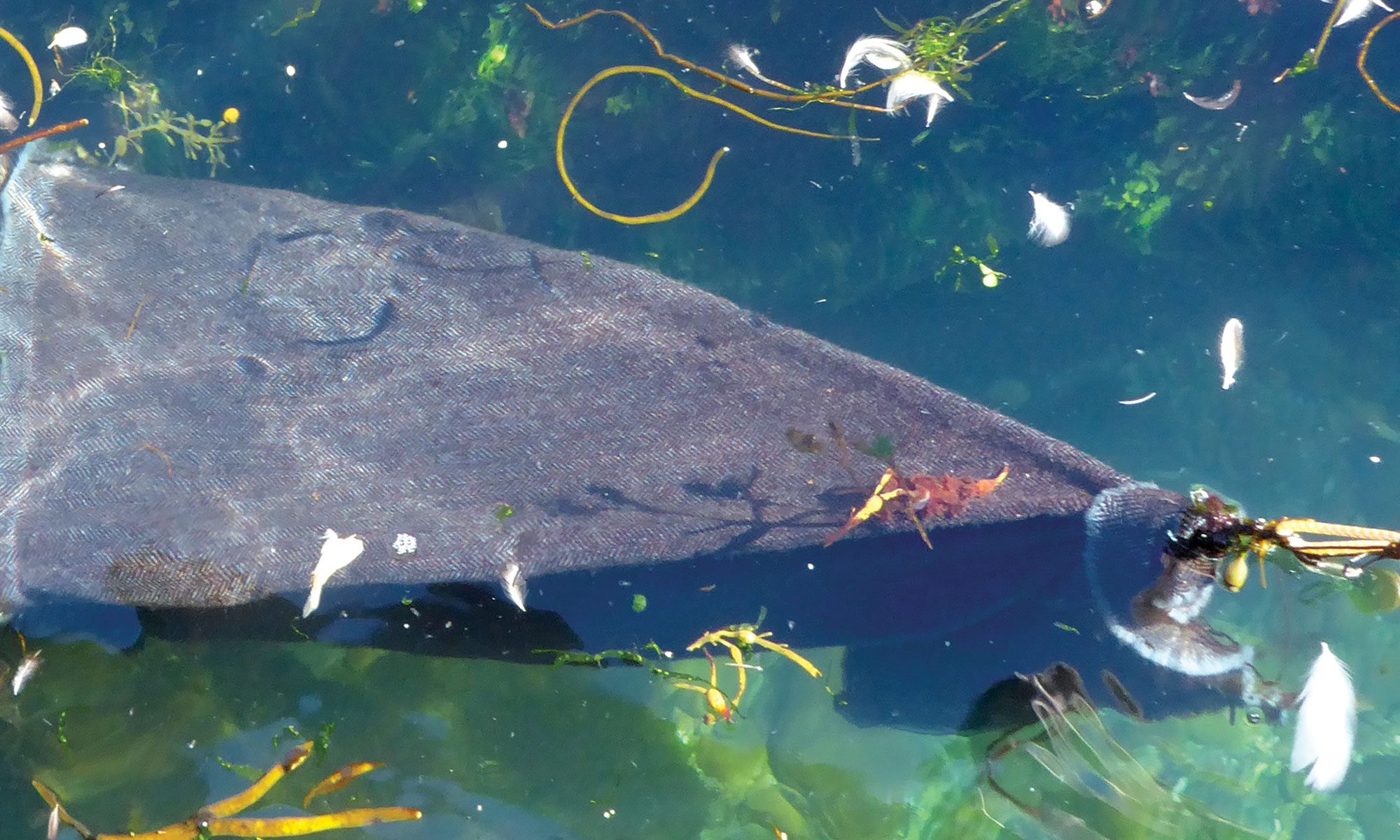From the Middle Ages until the mid 1700s Shetlanders made ‘wadmal’, handwoven wool cloth, for paying rent and tax to landowners in Norway, Scotland and Shetland.
The people spun the yarn which they then wove in their homes on upright looms, then fulled the long lengths. Unlike other cultures where fulling was done by stamping in tubs and on other surfaces with the hands or feet, the Shetlanders (and Faroese) fulled the cloth in toevakoddies, rocky clefts at the shore. The cloth was secured and immersed in the toevakoddi. The seawater movement, with underwater rock surfaces, stabilised warp and weft, strengthened and thickened the cloth and lightly milled the surface. Depending on the amount of fulling required, the cloth could have been immersed for several days. The precise working methods involved are unrecorded.
Many of these sites of communal work are still recognised as place names in most areas of Shetland. The Norse term toeva means to full cloth and a koddi is a hollow or bowl. The risk of losing the cloth to the sea, the production of a year’s work, could have grave consequences.
The three artists have taken differing approaches to a common goal in responding to this early and innovative use of wave power.
SOME FACTS ABOUT WADMAL, TAXCLOTH AND TOEVAKODDIES
- All Shetlanders paid rent, some also paid tax.
- Rent was also paid in butter and fish oil, and calfskins.
- In 1664, people in the communities owned by one landlord paid over 8080 meters of cloth.
- The basic unit of cloth currency was an ‘ell’. In northern countries the dimensions of the ell varied. For this project an ell is taken to be 30 inches wide by 2 feet in length.
- ‘Pennies’ were half the value of an ell – one foot in length.
- 6 ells = one ‘shilling’ 10 shillings = one ‘pack’. 8080 meters of wadmal = 220 packs
WHERE TO FIND OUT MORE ABOUT THIS SUBJECT
Ballantyne, John H. & Smith, Brian. (ed.) (1999) Shetland Documents 1195-1579. Lerwick: SIC & Shetland Times Ltd.
Ballantyne, John H. & Smith, Brian. (ed.) (1994) Shetland Documents 1580-1611. Lerwick: SIC & Shetland Times Ltd.
Ballantyne, John H. (ed.) (2016) Shetland Documents 1612-1637. Lerwick: SIC & Shetland Times Ltd.
Cooke, Bill, Christiansen , Carol & Hammarlund, Lena (2002) ‘Viking woollen square‐sails and fabric cover factor’. in International Journal of Nautical Archaeology, 31:2, 202-210, Available at: https://www.tandfonline.com/doi/abs/10.1111/j.1095-9270.2002.tb01414.x (Accessed 26/01/23)
Christiansen, Carol & Hammarlund, Lena. (2014). ‘The holistic nature of textile knowledge: fulling cloth in the sea’ in Bergerbrant, S. and Fossøy, S.H. A stitch in time : essays in honour of Lise Bender Jørgensen, Gothenburg: Gothenburg University, Department of Historical Studies. Pp 54-61.
Hakonardottir, Hildur, Johnston Elizabeth & Juuhl, Marta Klove. (2016). The Warp-Weighted Loom. Leikanger: Skald Forlag.
Jakobsen, Jakob. (1932). The Etymological Dictionary of the Norn Language in Shetland. Jakob. Reprint, Lerwick: Shetland Folk Society, 1985.
Lightfoot, Amy (1996), ‘From heather clad hills to the roof of a medieval church – The story of a woolen sail’, in Norwegian Textile Letter Vol II No 3, Available at: https://norwegiantextileletter.com/wp-content/uploads/2013/11/ntlmay961.pdf (Accessed 26/01/23)
Sayers, Wm. (2004) ‘Ostergard, Woven into the Earth’ Review of ‘Woven into the Earth: Textiles from Norse Greenland’. By E Ostergard. The Medieval Review, 06.06.17. https://scholarworks.iu.edu/journals/index.php/tmr/article/view/16176/22294 (Accessed 28/01/23)
Smith, B. (2000) Toons and tenants. Settlement and society in Shetland, 1299-1899. Lerwick: The Shetland Times. P44.
Smith, B. (2013) ‘Wadmal’, in Laurenson, S. (ed.) Shetland Textiles : 800 BC to the Present. Lerwick: Shetland Amenity Trust, pp 44-47.

